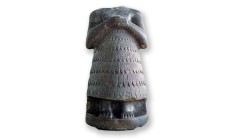The Market as Criminal and Criminals in the Market: Reducing Opportunities for Organised Crime in the International Antiquities Market
Mackenzie, S. (2011) ‘The market as criminal and criminals in the market: reducing opportunities for organised crime in the international antiquities market’, in Manacorda, S. and Chappell, D. (eds.) Crime in the Art and Antiquities World: Illegal Trafficking in Cultural Property. New York: Springer.
What is the relationship between organised crime and the antiquities market? There are two senses in which we can use the term “organised crime” here. In the first sense, we can see the international market in illicit antiquities as a criminal market (Polk 2000), organised into a structure of relations between thieves, smugglers, facilitators, sellers, and buyers of illicit commodities. We might therefore suggest that this illicit part of the trade is an example of “organised” crime. That argument could proceed without reference to the presence of conventionally stereotyped organised criminals in the market, in the sense of groups or networks of professional criminals who use violence and corruption in the pursuit of illegal financial gain. This view of the antiquities market proceeds with reference to the “spectrum of enterprise” approach to defining organised crime that sees global trade as always more or less legitimate or illegitimate, moral or immoral (Smith Jr. 1980; Edwards and Gill 2002, 2003). However, there are also of course many reports of antiquities being used as laundering mechanisms for drug money, as being linked to other international illicit markets, and as being colonised at the source end of the chain of supply and in transit to some extent by local political and bureaucratic corruption, the state military, other militias in conflict states, and organised crime groups, such as mafia-type organisations in Russia, Italy, and China. So we have, on the one hand, the argument that the international illicit market in antiquities is, even without reference to this type of organised criminality, an example of organised crime simply by dint of its organised market nature and the fact that many of its transactions are illegal according to the criminal laws of the jurisdictions where they take place. But we also have, on the other hand, the question whether various types of more conventionally conceived “organised criminals” are operating within the market,and if so at which points and in what form.
